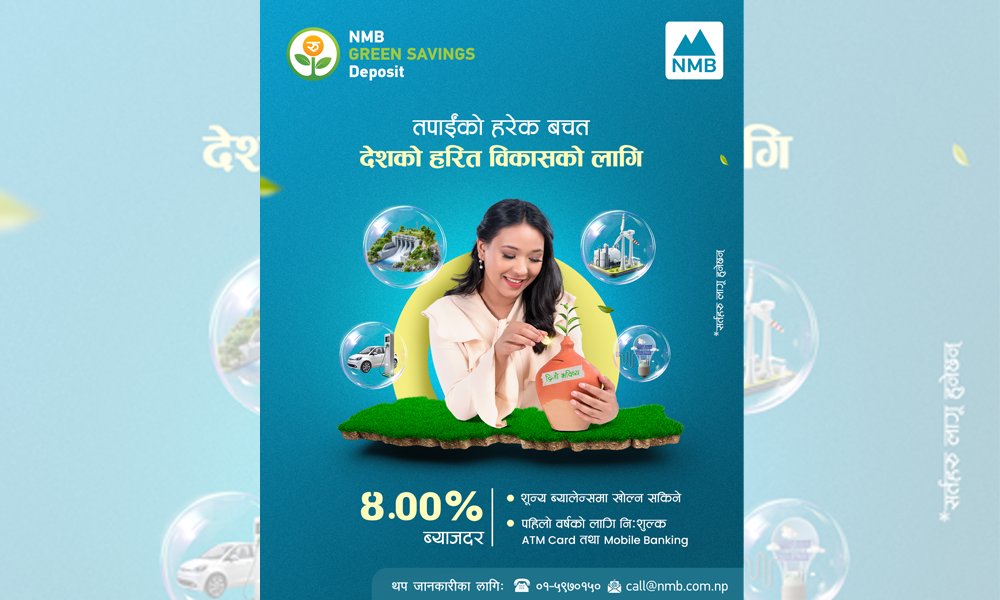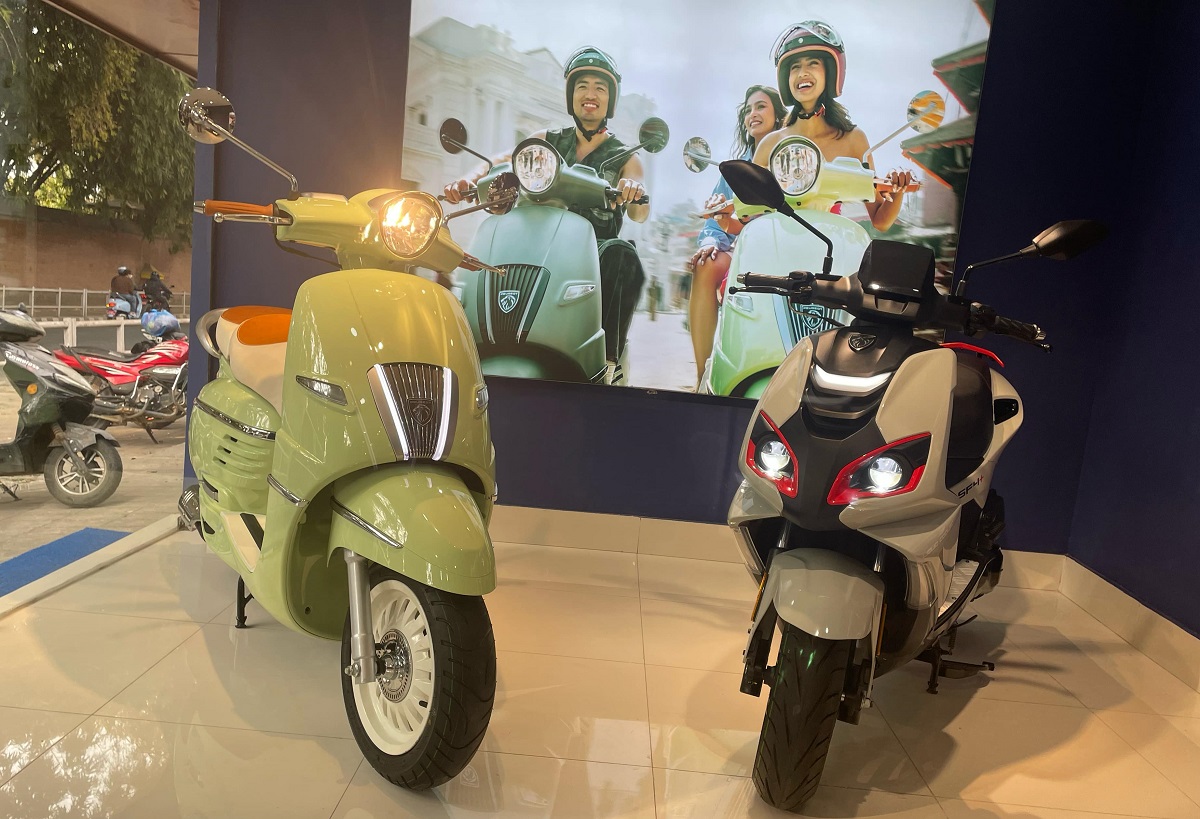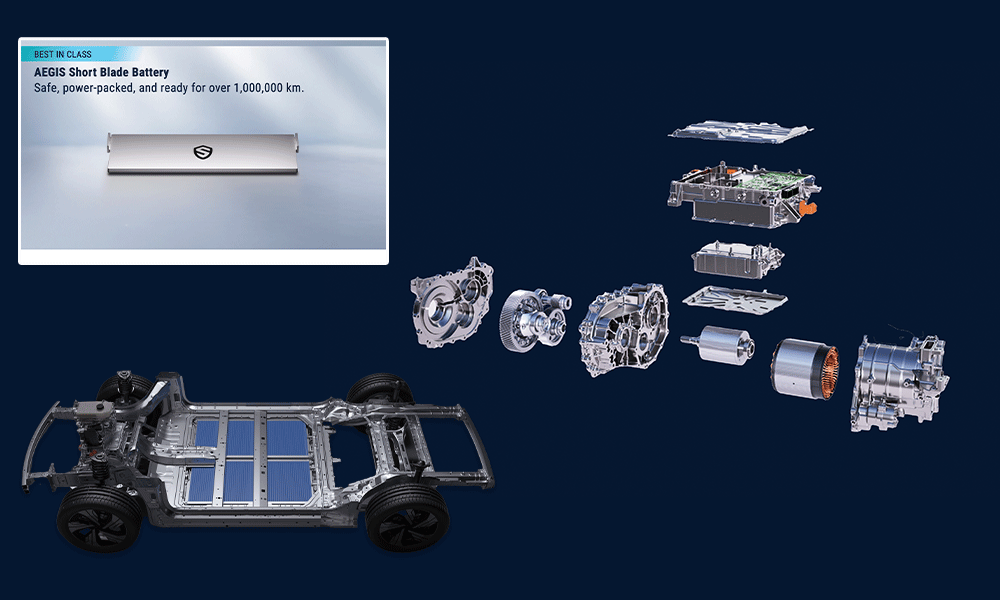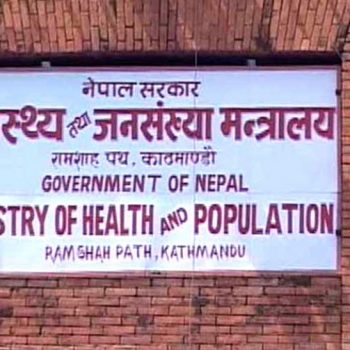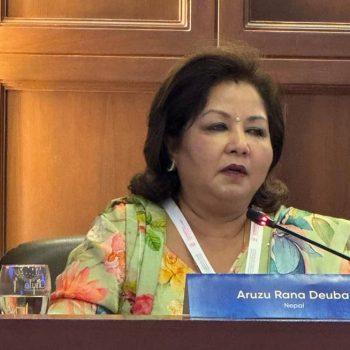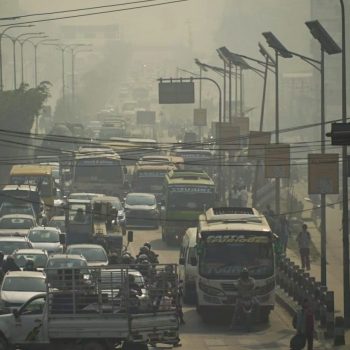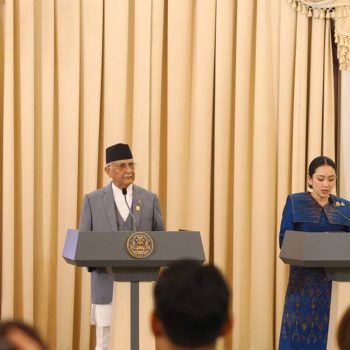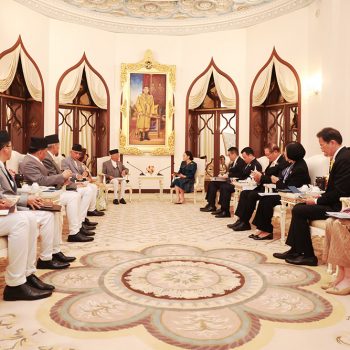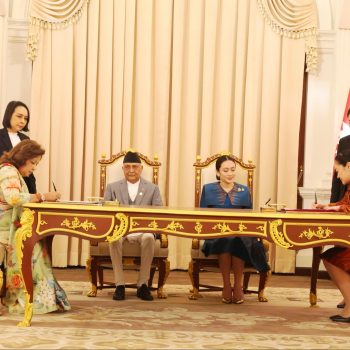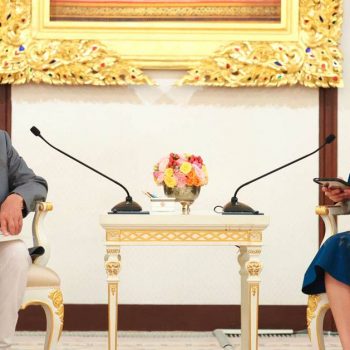Sushil Gyawali, CEO of NRA: Charioteer of reconstruction
Pace taken after Gyawali’s comeback in NRA
KATHMANDU: The earthquake of 2015 devastated Nepal as homes of millions along with public buildings and properties were heavily destroyed. The country sought a strong shoulder for post-earthquake reconstruction.
The names of many great personalities including Dr. Baburam Bhattarai to lead the reconstruction appeared in the media. However, the government gave the responsibility to Sushil Gyawali, whom few knew. About eight months after the earthquake, the Reconstruction Authority was formed on 25th December and he was appointed the CEO.
Although unfamiliar to the general public, Gyawali was an experienced individual in the field of infrastructure planning and urban housing. Having proven himself in the past, the KP Oli-led government shouldered him with great responsibility.
Gyawali was to build billions of physical structures starting from scratch. Assuming office as the Chief Executive Officer of the National Reconstruction Authority on 27th December 2015, he started the work with 3 staff members and an estimated cost of Rs. 10 billion.
He says, “I started the biggest reconstruction work of our generation from scratch. The government had given 3 employees to NRA including 1 secretary, 1 officer and 1 deputy director to fulfill such a big responsibility.”
The then government led by KP Sharma Oli collapsed and two new governments were formed. The Chief Executive Officer Gyawali was also replaced by Govinda Pokhrel and Yuvaraj Bhusal.
After the left alliance won a majority in the 2074 BS elections, a new government was formed under the leadership of KP Sharma Oli. Gyawali made a comeback as the CEO of NRA.
This time, the environment for Gyawali was more favorable because the government, with the support of two-thirds majority, would not collapse. Thus, he was able to work on his concepts with confidence. In the first term, Gyawali had planned to distribute the first installment for the construction of private houses by planning according to the concept paper, and in his second term, has completed 75% of the reconstruction work.
As random distribution of relief materials to quake victims was not allowed, Gyawali had to face a lot of political pressure. He then had to face citizen-level protests during the construction of Ranipokhari.
Who is Gyawali?
Sushil Gyawali was born in Riddhikot village municipality of Palpa on 29th December 1970. He completed his initial studies in Riddhikot and studied at Tribhuvan Multipurpose Campus in Tansen, Palpa up to ISc.
After completing his ISc, he completed his studies from Pulchowk Engineering College at the undergraduate level. After graduating, he got the opportunity to work as a technical consultant in road construction from Dumre to Besisahar.
He then worked for one year on the UNDP’s PDP project. Gyawali also had the opportunity to work for six months in the Lumbini Development Fund.
While working on the Lumbini Development Fund project developed by Kenzo Tange, he became interested in construction projects.
While at UNDP, he also worked in the field of development. Gyawali started working as a technical advisor in Butwal Municipality in 1997 and spent about 7 years there.
In 2004, Gyawali started his post-graduate studies from Pulchowk Campus. After completing his studies, he worked as an urban development expert for three and a half years at the request of the Nepal Municipal Association, an umbrella organization of municipalities. While working in the second term after completing the first term of six years of the Urban Development Fund, he was appointed as the Chief Executive Officer of NRA.
First term in NRA
After being appointed as the CEO of NRA for the first time, Gyawali had submitted his working paper to the National Planning Commission on the reconstruction of damaged structures. He says that the concept paper has been prepared for the purpose of contributing to the nation rather than greed for the post of NRA.
He recalls that the modalities of reconstruction, stages of implementation, legal arrangements, resource management and other elaborate discussions were held in the concerned bodies. He had also handed over his working paper to the secretaries of various ministries, including the Chief Secretary to the Government of Nepal. Gyawali says that the concept paper helped a lot in the initial periods of reconstruction.
“I spent my first term laying the foundation for reconstruction and rehabilitation. Based on the concept paper prepared by me, the overall plan, action plan and five-year plan outlines, reconstruction and rehabilitation policies, legal system, manpower management and work schedule, action plan for implementation were prepared,” he said.
The quake affected 857,000 private homes, more than 7,500 schools, 544 health facilities, 920 archeological sites, 162 government buildings and 116 security structures. The National Planning Commission estimated that more than Rs. 938 billion would be spent on reconstruction.
According to Gyawali, the Government of Nepal has been managing the amount even though donor bodies had pledged around Rs. 300 billion through a conference.
Second term full of accomplishments
During Gyawali’s first term, the first installment was distributed and the construction of houses was started. In his second term, however, reconstruction and rehabilitation work gained momentum.
According to Gyawali, 811, 754 beneficiaries have already taken the second installment amount by signing an agreement with NRA. Similarly, 753,104 or 93% have completed the construction of their houses within this fiscal year.
He said that the remaining 7% service recipients are in dire financial straits and that they are ready to provide necessary technical or financial assistance for the construction of their houses.
“We have deployed 254 mobile teams to build houses. We have made arrangements to help build an additional 300,000 houses for the disabled, helpless and destitute citizens,” he says.
Similarly, work is underway to build land for 12,000 landless people by providing them with Rs. 200,000 or giving them ownership of the land they are already living in, according to Gyawali.
About 83% of the 7,553 schools have been reconstructed. The target is to complete the remaining 17% of the school reconstruction work within this fiscal year.
Of the 920 archeological sites damaged by the quake, 493 have been completed. Thus, about 70% of the reconstruction work is moving towards completion, says Gyawali.
According to Gyawali, the biggest challenge in the construction of heritages are the use of old methodologies and their cultural significance.
“We cannot rebuild heritages easily. This requires the use of old methods, old construction materials and the consent of locals. The delay is due to the need to make the old structure earthquake-resistant while also maintaining them,” Gyawali added.
He says the reconstruction of universities and archeological heritages will take more time. He estimates that it will take another two years to construct Gorkha Durbar, Nuwakot Durbar, Harihar Bhawan and all monasteries.
“As the foundational work of reconstruction of government buildings, health sector and education sector have been completed within the next year, there is not much left,” Gyawali said.
NRA has formulated an ‘exit strategy’ to complete the remaining works, as the last date for NRA is 16th January of the next fiscal year. NRA is preparing to provide work to concerned bodies from next July by coordinating and cooperating with them.
New practice in Ranipokhari reconstruction
Gyawali faced the most challenges in the reconstruction of Ranipokhari. He said that he had to work hard to procure the required materials including lime and soil.
Gyawali also claimed that the temple of Balgopaleshwar has been made earthquake resistant by converting old technology used by ancestors into new technology.
He said that Ranipokhari is the best example of old technology being used in heritage reconstruction.
“Ranipokhari could be a shining example of heritage reconstruction,” he added.
Gyawali recalls that during the construction of Ranipokhari, there was a great controversy over the style it should be reconstructed in. He said that decisions were made by giving importance to antiquity.
Salute to the people
According to Gyawali, the people have been the biggest support in post-earthquake reconstruction and rehabilitation and that the Nepali people are now ready for prosperity development.
“The enthusiasm and energy shown by the people in this work is unmatched,” he said.
Stating that the enthusiasm of the people was appreciated from all over the world, he mentioned that all the renovated houses were built by the people despite the NRA providing Rs 300,000 and technical assistance.
“The people said they would build homes by themselves, which is the biggest factor that contributed to this success,” he said.
He says that post-earthquake reconstruction has taught the use of many technologies, as well as public participation. He feels that people have happily accepted new technology in the construction of strong and resilient homes.
A great experience
According to Gyawali, the NRA has done a job worthy of the pride of the younger generation and the international community.
“Looking back, it was very challenging and daring to take on such a big responsibility at the risk of my career. Now, as I look behind, I feel that this was the most important decision of my life,” he says.



